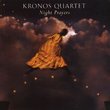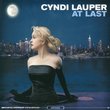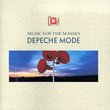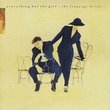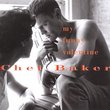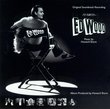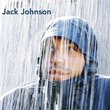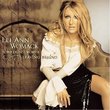| All Artists: Terry Riley, Bang on a Can Title: Terry Riley: In C Members Wishing: 6 Total Copies: 0 Label: Cantaloupe Release Date: 9/11/2001 Album Type: Import Genres: Dance & Electronic, Special Interest, New Age, Classical Styles: Ambient, Techno, Experimental Music, Chamber Music, Historical Periods, Modern, 20th, & 21st Century, Instruments, Electronic Number of Discs: 1 SwapaCD Credits: 1 UPC: 713746243227 |
Search - Terry Riley, Bang on a Can :: Terry Riley: In C
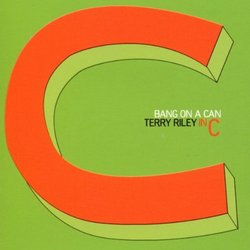 | Terry Riley, Bang on a Can Terry Riley: In C Genres: Dance & Electronic, Special Interest, New Age, Classical In 1964, Terry Riley kicked off a revolution with his landmark piece, "In C" -- inspiring such young composers as Philip Glass and Steve Reich. Now, Bang on a Can reinterprets this minimalist claassic with an explosive co... more » |
Larger Image |
CD DetailsSynopsis
Album Description In 1964, Terry Riley kicked off a revolution with his landmark piece, "In C" -- inspiring such young composers as Philip Glass and Steve Reich. Now, Bang on a Can reinterprets this minimalist claassic with an explosive combination of instruments from around the globe, propelling this transcendental 60's masterpiece into the future. Similarly Requested CDs
|
CD ReviewsSleek new version of the minimalist masterpiece R. Hutchinson | a world ruled by fossil fuels and fossil minds | 10/14/2001 (5 out of 5 stars) "Terry Riley's "In C" has been called groovy and euphoric. It is definitely a product of its times, the 1960s, and is by now a classic of the 20th century, right up alongside "The Rite of Spring." ("New Music" can't any longer apply to 37-year-old music -- "Late 20th Century" seems more accurate.) The score for "In C" is simply a succession of 53 simple motifs, for "any group of musicians," to be played in succession for any amount of time! The piece moves from C, to E minor, to C, to G minor, revolving as the instruments shift from motif to motif one by one. From simplicity emerges complexity, and every performance will be unique. I was skeptical that this new Bang On a Can version, recorded in 1998, could equal the great 25th Anniversary concert with Riley himself, on New Albion, but it does, with a quite different approach. The 1990 recording is 76 minutes long, while this 1998 version is only 44 minutes long. Evan Ziporyn's Bang On a Can ensemble has only 11 musicians, while the 1990 version had 31. (Ziporyn played bass clarinet for Riley's 1990 concert.) The feel is quite different, with a sense of urgency and inexorability in contrast to the sense of endless, timeless cycling in the 1990 version. Riley and three others add vocals to the long 1990 version, which adds to the mystical, Eastern transcendental experience. Bang On a Can, with prominent bass, creates a distinctly Western "In C," which realizes Riley's goal of awakening and enlightenment in a more immanent way, through the flow of time in modern life, rather than outside it. Simply superb, an essential interpretation for the new millennium." WOW!! This version is beautiful in sonority and timbre and David J. Huber | New York, NY United States | 06/25/2004 (5 out of 5 stars) "in the energy of the performance. I've had the original recording for a long time, and have enjoyed it as the first "definitive" sound of the piece. But this Bang On A Can version brings out the real inner beauty of the piece. WIth fewer musicians, and such diverse instrumentation, the individual lines stand out clearly while still blending into the overall mix and wash of sound.I just listened to this for the first time and I am in total rapture from it. All I can say is WOW.This is an excellent recording of In C, not to be missed." A minimalist classic in a bold new rendition Bruce Hodges | New York, NY | 07/30/2003 (5 out of 5 stars) "Usually the pianist in this piece is saddled with "the pulse," a series of repeated octaves acting as a rhythmic spine holding the score together for its mesmerizing 45 minutes. Fortunately in this case, the outstanding Australian artist Lisa Moore is given more interesting tasks, while the monotony of banging out these notes is handed over to a laptop computer. For those who are inclined toward Riley's pioneering experiment, this will be arresting and rewarding listening. The score fits on a single page, and consists of a series of 53 short instrumental figures, designed to be played in order by any combination of instruments. Each musician performs a given figure as many times as desired before moving on to the next one. The score is designed so that all figures mesh with each other, resulting in a huge wall of sound, slowly evolving as the musicians reach new plateaus. Compared to the relative innocence and sunshine of the original, this one has a raucous, fiery quality that I like even better. The go-for-broke Bang on a Can crew gives it a loud, intense performance that is especially satisfying in the climactic thickets, when the entire group seems immersed in throbbing harmonic waves. It would be hard to single out musicians, but Evan Ziporyn's beautiful clarinet cannot go unnoticed, as well as David Cossin's excellent work on glockenspiel and vibraphone, and Maya Beiser on cello. But pretty much everyone here seems to be having a great time, and the effect is flat-out exhilarating. The original version, still available on Sony, has its own charms, and there is an intriguingly delicate one with the Shanghai Film Orchestra (Celestial Harmonies), but this is now my favorite -- involved, committed and extremely powerful. Cantaloupe's sound is crystal-clear, and the lively packaging is excellent, too -- mostly bright orange and green graphics that do both Terry Riley and the group proud."
|

